Contents
Today, many keep turkeys at home. The topic of incubation is very important for breeders, because despite the similarity of the process for all domesticated birds, it has its own characteristics. Even those who use young turkeys to hatch need to know the principle of breeding poultry in an incubator, as this may be needed sooner or later. Let’s talk about this in more detail and learn about all the nuances of the process.
Preparation process
First of all, having decided to breed turkey poults through an incubator, they begin the selection of eggs. Experts advise choosing copies of the same size. The best eggs are taken from turkeys over 8 months old. Don’t leave them in the nest. As soon as there are more than ten eggs, the maternal instinct may wake up in the female, and she will begin to incubate them.
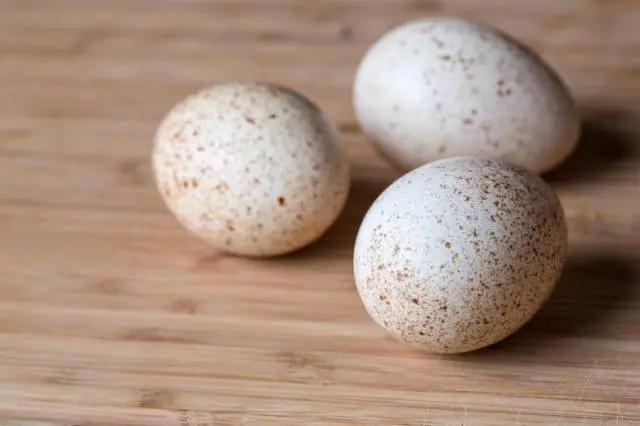
Before placing in the incubator, all specimens must be cleaned (but not washed) of dirt. This must be done carefully so as not to damage them. It is also worth paying attention to growths and defects on the shell. Such specimens are best not placed in an incubator. If they have growths, or if their shells are very thin, this indicates that there are serious problems in the house. Diseases are best eliminated in time, disinfected, and the birds are fed with chalk and sprat.
The conditions for the selection and storage of material for the incubation of turkeys are given in the table below.
Prerequisite | Index |
|---|---|
Temperature conditions | +12 degrees Celsius |
Humidity | Should not exceed 80% |
Storage layout | Blunt end up, after four days of storage they are turned over |
Maximum storage time | No more than 10 days |
Disinfection before incubation is an optional process, but recommended by most experts. For this you can use:
- hydrogen peroxide;
- glutex and other special solutions;
- potassium permanganate solution.
Specialized tools today can be easily found on sale. Incubation of turkeys with a large number of eggs should be carried out using professional tools.
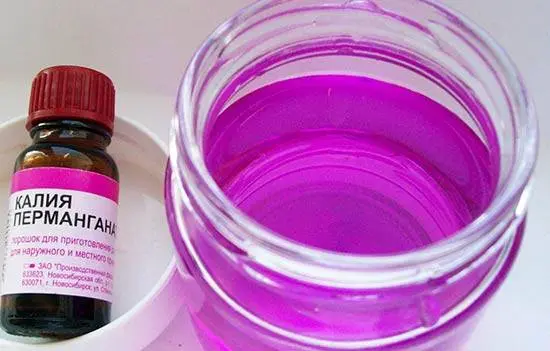
Egg Quality Determination
On large farms, hatching eggs are carefully checked. The process of candling is used for this.
The rules for candling are as follows:
- it should be visible to the light that the protein does not have extraneous inclusions and is absolutely transparent;
- the yolk should have clear contours and be located in the middle of the egg;
- the air chamber should always be located at the blunt end;
- when turning the egg, the yolk should move slowly.
If all the points are met, such an egg can be considered ideal. From it you can get healthy offspring in an incubator.
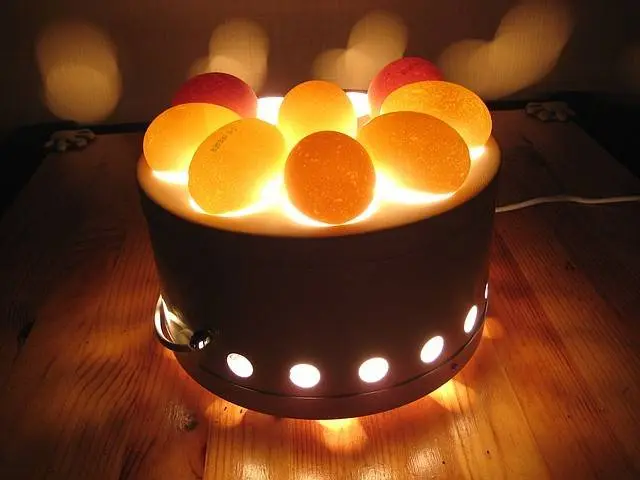
To learn more about the candling process, we recommend watching this video:
Breeding new offspring is a responsible process, and incubation regimes are of great importance here.
Incubation process
Turkeys are domestic birds that easily breed on their own. However, this process is associated with some difficulties, which are extremely difficult to solve in the presence of a large farm. In the place where the turkey hatches eggs, it is necessary to withstand a certain temperature and humidity, to ensure that the bird eats well, because it often refuses to leave the nest.
Those who were engaged in breeding turkeys noted that their maternal instinct is very developed. Often, males are engaged in incubation. If the farm is large, it is better to select material in a timely manner and hatch it yourself in an incubator. A heavy turkey will not crush some of the eggs; only high-quality specimens can be selected.
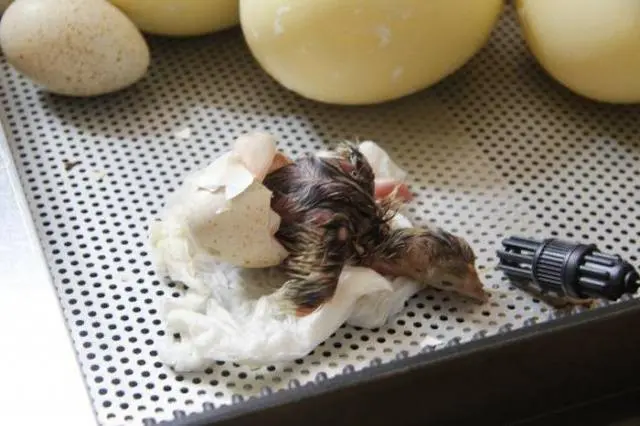
Conditions for the incubation process
In order for the hatching of turkeys not to be spoiled, it is necessary to withstand the conditions under which the incubation process will be ideal. First, let’s deal with the timing of withdrawal.
The period of incubation of turkeys is 28 days, it is strictly divided into four stages, the modes of each of them are different:
- initial stage (from 1 to 7 days);
- middle stage (from 8 to 14 days);
- the end of the incubation period (from 15 to 25 days);
- withdrawal (26-28 days).
Let’s talk about each of the stages in more detail. It is important to know the following here:
- temperature in the incubator;
- humidity;
- the process of turning turkey eggs;
- Is there a need for refrigeration?
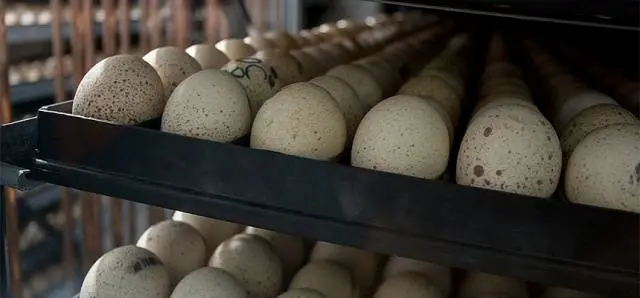
If at the output the number of healthy turkey poults is 75% or more of the number of eggs laid in the incubator, then all modes are observed correctly.
First stage
In the first week of incubation, it is important to maintain a high humidity of at least 60%. This mode is used for all non-waterfowl. During this period, it is very important that the air exchange in the incubator is good. A turkey egg absorbs a lot of oxygen and releases a lot more carbon dioxide when compared to a chicken egg.
For everyone who decides to breed turkeys in an incubator, a special mode table will help. It is given for each of the periods separately. In the first two weeks, the cooling of the material is not carried out.
Condition | Stage-appropriate indicator |
|---|---|
Humidity | 60-65% |
Temperature | 37,5-38 degrees Celsius |
egg turning | 6-8 times a day |
As for turning eggs, this process is extremely necessary, because the ripening embryo can stick to the shell. At the first stage, turns should be carried out at least six times a day.
On the eighth day after the end of this stage, the incubation material is removed and analyzed by the candling method described earlier. It is important that all specimens have a developed circulatory system of the embryo. If it is not there, then it is simply removed. He will not give offspring.
Second week of incubation
The second week also does not require the breeder to chill the eggs. The temperature in the incubator is not reduced, leaving the same. According to many recommendations from professionals, the best temperature for turkey eggs is 37,8 degrees.
Condition | Stage-appropriate indicator |
|---|---|
Humidity | 45-50% |
Temperature | 37,5-38 degrees Celsius |
egg turning | 6-8 times a day |
You need to turn the eggs in the same way as in the first week. Reduce only the humidity indicator to 50%.
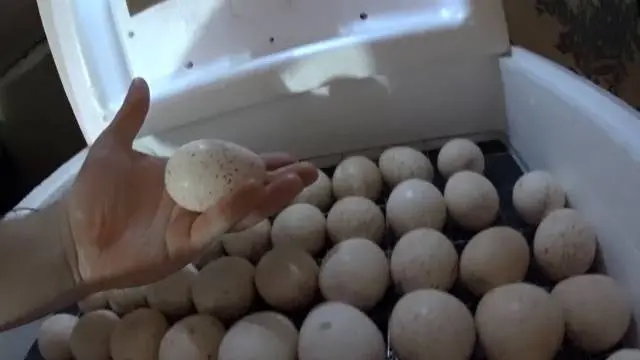
The third stage
Two weeks later, the humidity index is again increased to the values of the first week. Now a cooling process is added to the egg turning procedure. You need to perform the procedures daily up to the 25th day inclusive.
Condition | Stage-appropriate indicator |
|---|---|
Humidity | 65% |
Temperature | 37,5 degrees Celsius |
egg turning | 4 times a day |
Cooling process | 10-15 minutes |
Cooling is a special procedure. It is carried out for the reason that by this time the embryos themselves begin to generate heat. To check if the eggs are chilled enough, you need to bring them to your cheek or eyelid. If it is chilled, it will be neither warm nor cold. After that, they are again placed in the incubator. There will be very little time left before the conclusion. The eggs will soon hatch into turkeys.
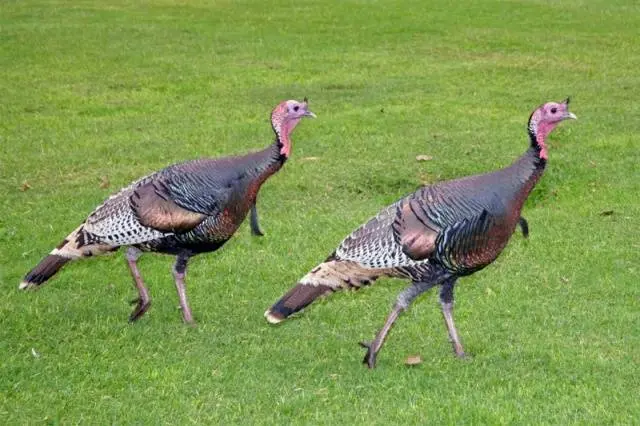
Conclusion
The first turkey poult may hatch as early as day 26 of the incubation period. In the last three days, you do not need to turn the eggs over or refrigerate them. On the 27th day, when the chicks hatch, you need to carefully monitor the ventilation in the incubator. It is important that the chicks have enough oxygen.
Condition | Stage-appropriate indicator |
|---|---|
Humidity | up to 70% Bonus terms and conditions apply |
Temperature | 37 degrees Celsius |
egg turning | No |
When most of the turkeys hatch, it is better to increase the temperature a little (by about half a degree). The conclusion is the most important stage, it must be approached responsibly.
If you decide to start turkeys for the first time, and there is simply no one to carry the eggs, you can purchase hatching eggs. They can be found on sale. There are specialized poultry farms, where a beginner can be consulted on hatching turkeys. Whichever method of breeding is eventually chosen, using an incubator is a reliable method of obtaining healthy offspring.









